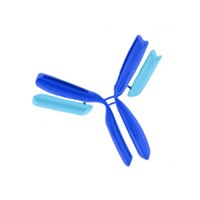Atorvastatin reduces NF-kappaB activation and chemokine expression in vascular smooth muscle cells and mononuclear cells.
Ortego, M, et al.
Atherosclerosis, 147: 253-61 (1999)
1998
Afficher le résumé
Cardiovascular mortality, mainly due to the rupture of unstable atherosclerotic plaques, is reduced by 3-hydroxy-methyl-glutaryl-coenzyme A (HMG-CoA) reductase inhibitors. Inflammatory cells, attracted to the vascular lesion by chemokines, have been implicated in the process of the plaque rupture. In cultured vascular smooth muscle cells (VSMC) and U937 mononuclear cells we have studied the effect of Atorvastatin (Atv) on nuclear factor kappaB (NF-kappaB) activity, an inducer of the mRNA expression of chemokines such as interferon-inducible protein 10 (IP-10) and monocyte chemoattractant protein 1 (MCP-1). Angiotensin II (Ang II) and tumor necrosis factor alpha (TNF-alpha) increased NF-kappaB activity in VSMC (2 and 5-fold, respectively). Preincubation of cells with 10(-7) mol/l Atv diminished this activation (44 and 53%). The inhibition was reversed by mevalonate, farnesylpyrophosphate (FPP) and geranylgeranylpyrophosphate (GGPP), but not by other isoprenoids. Coinciding with the NF-kappaB activation in VSMC, there was a diminution of cytoplasmic IkappaB levels that was recovered by pretreatment with Atv. Ang II and TNF-alpha induced the expression of IP-10 (1.5 and 3.4-fold) and MCP-1 (2.4 and 4-fold) in VSMC. Atv reduced this overexpression around 38 and 35% (IP-10), and 54 and 39% (MCP-1), respectively. Our results strongly suggest that Atv, through the inhibition of NF-kappaB activity and chemokine gene expression, could reduce the inflammation within the atherosclerotic lesion and play a role in the stabilization of the lesion. | 10559511
 |








